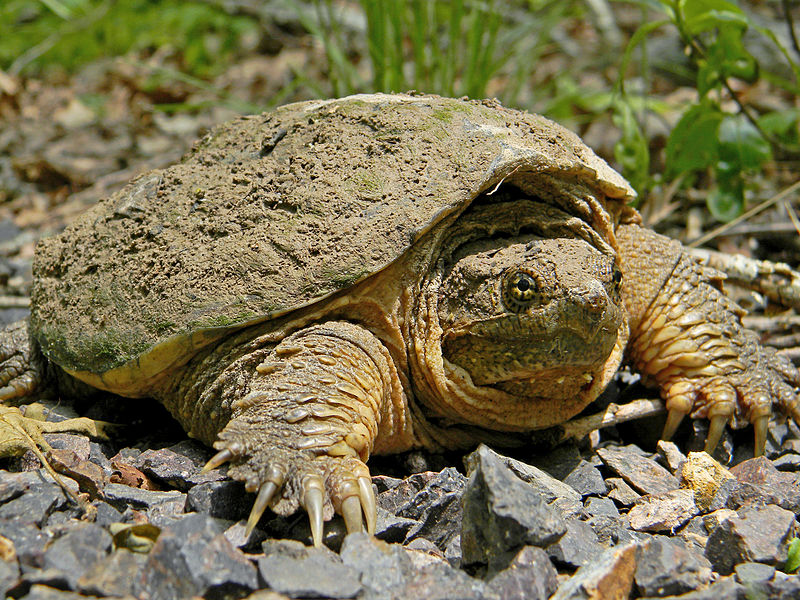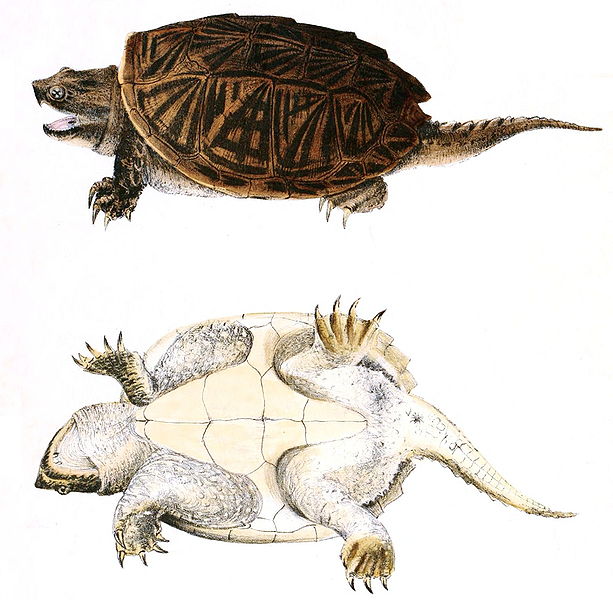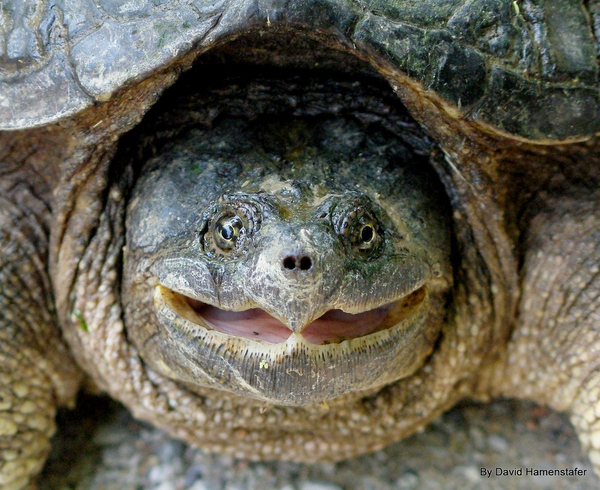

 The common snapping turtle (Chelydra Serpentina) is a freshwater turtle that naturally resides from the areas of southern Canada, southwest to the edge of the Rocky Mountains, east to Nova Scotia and Florida and as far southwest as northeastern Mexico. This species and the aligator snapping turtle are the only species in its family found in North America.
The common snapping turtle (Chelydra Serpentina) is a freshwater turtle that naturally resides from the areas of southern Canada, southwest to the edge of the Rocky Mountains, east to Nova Scotia and Florida and as far southwest as northeastern Mexico. This species and the aligator snapping turtle are the only species in its family found in North America.
The common snapping turtle tends to live at higher latitudes near fresh water. They inhabit ponds, lakes, streams, estuaires and swamps. Snapping turtles spend most of their time in the water because they are able to stay submerged for about three hours at a time. The most common reason for leaving the water is when the females lay eggs on nearby land.
Snapping turtles are considered the top predator in their environment. Snapping turtles are omnivores so they consume both plants and animals. They are also scavengers and hunters of whatever they can swallow. Snapping turtles prey on invertibrates, fish, frogs, small mammals and even smaller turtles. They lure their prey in by sticking out their small worm-like tongs and quickly attacking any takers. This is easy for them because they have powerful snapping jaws and and large claws they use to tear apart their captured dinner.
There are only two species of snapping turtles in this family. The common snapping turtle (Chelydra serpentina) and the larger alligator snapping turtle (Macrochelys temminckii).
The common snapping turtle is very muscular underneath its tough rigid shell. This shell can reach about 20 inches long on an adult snapping turtle. Although its shell is smoother than the alligator snapping turtles spiky shell it is still rather rough. They have rounded heads and thick short legs with claws used to dismember food and to climb onto land in order to lay their eggs.
This shell can reach about 20 inches long on an adult snapping turtle. Although its shell is smoother than the alligator snapping turtles spiky shell it is still rather rough. They have rounded heads and thick short legs with claws used to dismember food and to climb onto land in order to lay their eggs.

Sources:
Designer and Info: